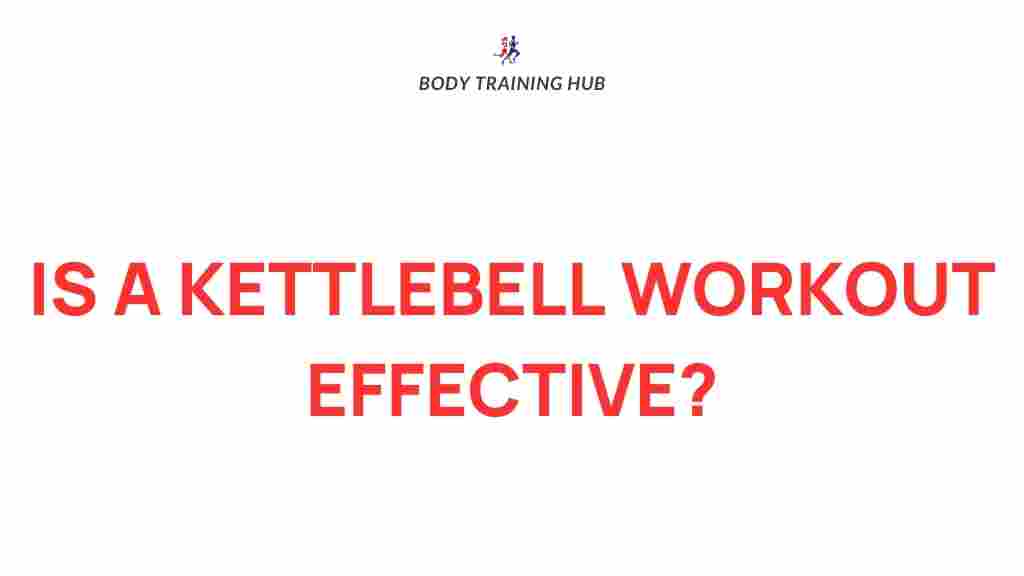Unleash the Power of Kettlebell Workouts for Ultimate Fitness Transformation
In the realm of fitness, few tools can rival the versatility and effectiveness of the kettlebell. Whether you’re looking to shed fat, build muscle, or enhance your overall functional fitness, a kettlebell workout can help you achieve your goals. This article will explore the myriad benefits of kettlebell training and provide you with a comprehensive guide to integrating it into your routine for maximum results.
Why Choose Kettlebell Workouts?
Kettlebell workouts are renowned for their effective approach to strength training. Here are some reasons why incorporating kettlebells into your fitness regimen can lead to an ultimate transformation:
- Full-Body Engagement: Kettlebell exercises engage multiple muscle groups simultaneously, promoting overall strength and coordination.
- Fat Loss: High-intensity kettlebell workouts boost your metabolism, leading to significant fat loss.
- Muscle Building: Kettlebell training effectively targets both major and minor muscle groups, promoting muscle hypertrophy.
- Functional Fitness: Kettlebells improve your ability to perform everyday tasks by enhancing strength, flexibility, and endurance.
- Time Efficiency: A kettlebell workout can deliver a full-body workout in a short amount of time, making it ideal for busy individuals.
Getting Started with Kettlebell Workouts
Before diving into specific exercises, it’s essential to understand the fundamentals of kettlebell training. Here’s a step-by-step guide to getting started:
Step 1: Choose the Right Kettlebell
Selecting the appropriate kettlebell weight is crucial. Consider your current fitness level:
- Beginners: Start with a weight between 8-12 kg (18-26 lbs).
- Intermediate: Use a kettlebell between 12-16 kg (26-35 lbs).
- Advanced: Opt for 16 kg (35 lbs) and above, based on your strength.
Step 2: Master the Basics
Start with foundational kettlebell movements to ensure proper form and technique. Here are a few essential exercises:
- Kettlebell Swing: A dynamic movement that targets the posterior chain.
- Kettlebell Goblet Squat: A great exercise for building leg strength and core stability.
- Kettlebell Deadlift: Helps strengthen the hamstrings, glutes, and lower back.
- Kettlebell Press: Develops upper body strength and shoulder stability.
Step 3: Create a Balanced Routine
A well-rounded kettlebell workout should incorporate various movement patterns. Here’s a sample routine:
1. Kettlebell Swings - 3 sets of 15 reps2. Goblet Squats - 3 sets of 12 reps3. Kettlebell Deadlifts - 3 sets of 10 reps4. Kettlebell Press - 3 sets of 10 reps (each arm)5. Kettlebell Rows - 3 sets of 12 reps (each arm)6. Kettlebell Turkish Get Ups - 3 sets of 5 reps (each side)
Perform this routine 2-3 times a week, allowing for rest days in between.
Advanced Kettlebell Techniques
Once you’ve mastered the basics, consider incorporating advanced kettlebell techniques to further enhance your strength training and muscle-building efforts:
- Kettlebell Snatch: A powerful full-body movement that improves explosiveness.
- Kettlebell Clean and Press: This compound exercise combines a clean followed by an overhead press.
- Kettlebell Windmill: Excellent for building core strength and flexibility.
- Kettlebell Farmer’s Walk: This exercise enhances grip strength and overall stability.
Incorporating Cardio into Your Kettlebell Workout
To maximize fat loss, consider adding cardio elements to your kettlebell workouts. Here are some suggestions:
- High-Intensity Interval Training (HIIT): Mix kettlebell exercises with short bursts of cardio, such as jumping jacks or burpees.
- Tabata Training: Perform kettlebell exercises for 20 seconds, followed by 10 seconds of rest, for 8 rounds.
- Circuit Training: Combine multiple kettlebell exercises with minimal rest in between.
Troubleshooting Common Kettlebell Workout Challenges
As you embark on your kettlebell journey, you may encounter some common challenges:
Challenge 1: Poor Form
Ensure that you are maintaining proper form to prevent injuries. Consider working with a trainer or using online resources to refine your technique.
Challenge 2: Lack of Progress
If you’re not seeing results, consider adjusting your weight, increasing your workout intensity, or varying your routine to stimulate different muscle groups.
Challenge 3: Boredom
To keep your workouts engaging, try new exercises, change your workout environment, or join a kettlebell class.
Challenge 4: Recovery
Allow adequate recovery time between kettlebell sessions. Incorporate mobility work and stretching to enhance recovery and prevent stiffness.
Nutrition for Optimal Results
Alongside your kettlebell workouts, nutrition plays a critical role in achieving fat loss and muscle-building goals. Here are some tips:
- Stay Hydrated: Drink plenty of water before, during, and after your workouts.
- Protein Intake: Ensure you consume sufficient protein to support muscle recovery and growth.
- Balanced Diet: Incorporate a variety of whole foods, including fruits, vegetables, lean proteins, and healthy fats.
- Caloric Deficit: For fat loss, maintain a caloric deficit while ensuring you’re still fueling your workouts.
Conclusion
Incorporating kettlebell workouts into your fitness routine can lead to significant improvements in strength, fat loss, and overall functional fitness. By mastering the basics, creating a balanced routine, and addressing common challenges, you can harness the power of kettlebells for your ultimate fitness transformation. Remember, consistency is key. Embrace the journey, and watch as your body and strength evolve.
For further reading on effective workout techniques, check out this resource. To explore more about kettlebell training, visit this link.
This article is in the category Strength & Recovery and created by BodyTraining Team
